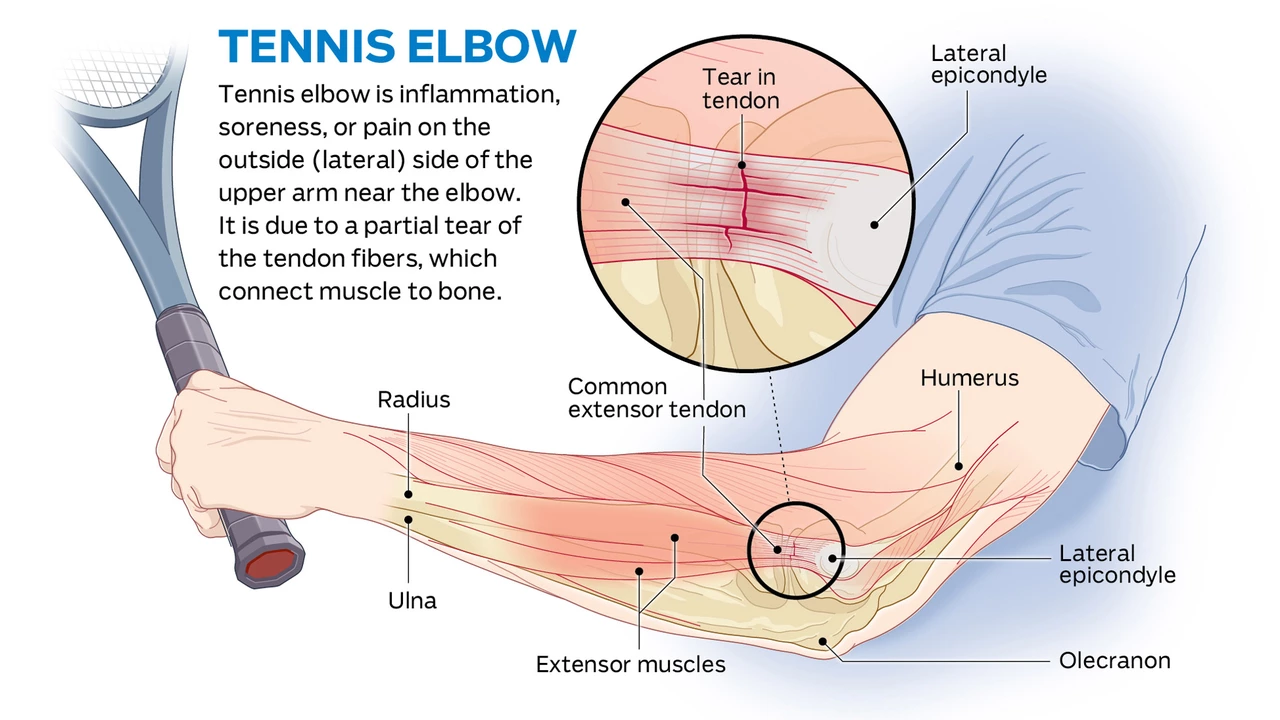Elbow Injury Guide: How to Spot, Treat, and Prevent Tennis Elbow
If you’ve ever felt a sharp ache in your forearm after a long practice, you’ve probably experienced the early stages of a tennis elbow. It’s not just a “pain that goes away”. Ignoring it can turn a simple soreness into a full‑blown elbow injury that sidelines your game for weeks. The good news is that most elbow problems can be managed at home if you act fast and follow a clear plan.
Recognizing the Signs of an Elbow Injury
The first step is knowing what to look for. A typical tennis elbow (lateral epicondylitis) starts with a dull ache on the outer side of the elbow that flares up when you grip a racket, lift a water bottle, or even shake hands. If the pain spreads down the forearm or makes it hard to straighten your wrist, that’s a warning sign. You might also notice a weak grip, a tingling sensation, or swelling around the joint.
Don’t wait for the pain to worsen. If you feel any of these symptoms after a few days of playing, stop the activity that triggered them and assess the situation. A quick self‑check – press your thumb against the outer elbow while extending your wrist. Increased pain means the tendons are irritated and need attention.
Simple Steps to Speed Up Healing
Rest and Ice. Give the elbow a break for 48‑72 hours. Replace hitting with low‑impact cardio or stretching. Apply an ice pack for 15‑20 minutes every two hours. Cold reduces inflammation and numbs the pain, letting you move more comfortably.
Brace or Compression Sleeve. A well‑fitted elbow brace supports the tendons and limits the motion that aggravates them. Wear it during any activity that involves forearm use, not just on the court.
Gentle Stretching. After the initial rest, start with light forearm stretches. One effective move is the “wrist extensor stretch”: extend your arm, palm down, and gently pull the fingers toward you with the other hand. Hold for 15 seconds and repeat three times each side.
Strengthening Exercises. When pain eases, add eccentric strengthening. Hold a light dumbbell (1‑2 kg), palm down, and slowly lower the weight while keeping your forearm steady. Do two sets of 15 reps each day. This exercise rebuilds tendon strength without overloading the joint.
Anti‑Inflammatory Measures. Over‑the‑counter ibuprofen or naproxen can help reduce swelling, but use them as directed and only for short periods. If you have stomach issues or other meds, talk to a pharmacist first.
Professional Help. If pain persists after a week of home care, schedule a physiotherapy appointment. A therapist can use techniques like deep‑tissue massage, ultrasound, or a structured rehab program tailored to your sport.
In rare cases, the injury may be more severe—a tear or fracture. Look for sharp, sudden pain, loss of motion, or a feeling that the elbow “gives way”. Those signs merit an urgent doctor visit, possible imaging, and maybe a brief cast or even surgery.
Prevention is the best long‑term strategy. Warm up for at least ten minutes before every match, focusing on wrist circles, forearm rolls, and light rallying. Keep your racket grip size appropriate; a grip that’s too small forces the forearm muscles to work harder. Balance your training with strength work for the shoulder, core, and lower body – a strong whole body takes pressure off the elbow.
Finally, listen to your body. Minor aches are normal, but a persistent, worsening pain is a signal that you need to adjust your routine. By catching symptoms early, using rest, ice, braces, and targeted exercises, you can get back on court faster and keep your elbow healthy for the long haul.
Well folks, tennis elbow is a bit like your mother-in-law's visit, it can feel like it lasts forever! But in reality, it usually hangs around for 6 to 12 weeks, depending on the severity and your treatment plan. But hey, like a bad sitcom, some cases can drag on for up to a year or more. Don't forget, a good physiotherapy program is like a great playlist - it can drastically shorten the "airtime" of this painful nuisance. So, keep smiling, because even a tennis elbow is not as persistent as a door-to-door salesman!
Continue reading...



